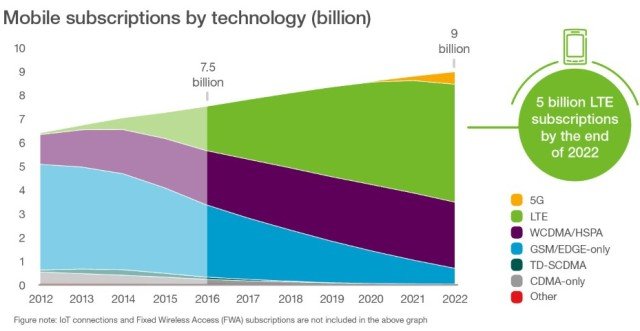
Ericsson said the acceleration of the 5G NR standardization schedule will enable large-scale trials and deployments of 5G in 2019.
“Non-standalone 5G NR will utilize the existing LTE radio and Evolved Packet Core network as an anchor for mobility management and coverage, while adding a new 5G radio access carrier to enable certain 5G use cases starting in 2019,” Ericsson said.
There will be 9 billion mobile subscriptions, 8.3 billion mobile broadband subscriptions and 6.2 billion unique mobile subscribers in 2022.
The strong subscription growth in India was mainly due to an attractive 4G “welcome offer” by Reliance Jio Infocomm, with free voice and data.
LTE subscriptions grew by 250 million subscriptions during Q1 2017 to reach around 2.1 billion. The net addition for WCDMA/HSPA was around 10 million subscriptions during the quarter.
There will be 9 billion mobile subscriptions by the end of 2022. Mobile broadband subscriptions will be 8.3 billion, accounting for more than 90 percent of mobile subscriptions. The number of unique mobile subscribers will reach 6.2 billion in 2022.
Mobile broadband will complement fixed broadband in some segments, and will be the dominant mode of access in others.
Subscriptions for PCs and tablets with mobile capabilities are expected to reach 320 million in 2022.
Nearly 90 percent of 3.9 billion smartphone subscriptions in 2016 were for 3G and 4G. By 2022, the number of smartphone subscriptions is forecast to reach 6.8 billion; almost all of these will be for mobile broadband.
